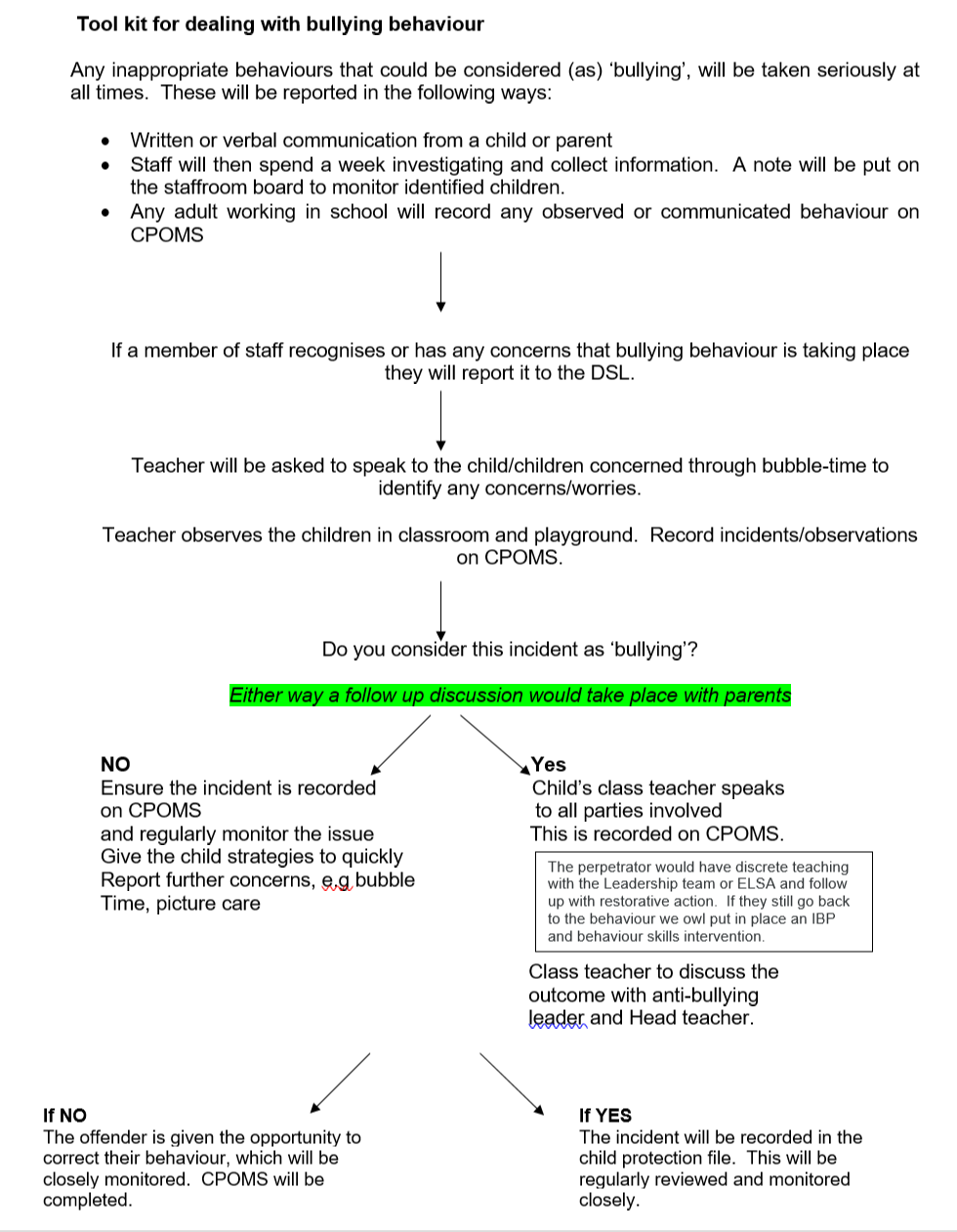Anti-Bullying Strategy
As a school, we aim to provide a safe, secure environment where all can learn without pressure. We believe that everyone has the right to be valued, cared for and feel safe within our school and wider community. We ensure that everyone is aware of how to keep themselves and others safe and are aware of the behaviour that is expected and acceptable (UNICEF Article 3).
Children are encouraged to behave well at all times, respecting others and observing the school rules (as set out in the Behaviour and Relationships Policy). Our children are made aware of how to recognise when pressure from others (including people they know) threatens their personal safety and well-being and know how to use and develop effective ways of resisting pressure and know where to get help.
Our policy is underpinned by our learning values of:
Kindness, Integrity and Respect
We underpin our Anti-Bullying Strategy and hold it in line with the Government Guidance 'Keeping children safe in education 2023'. In this document, it states that Child-on-child abuse is most likely to include, but may not be limited to:
- Bullying (including cyberbullying)
- Abuse in intimate personal relationships between peers
- Physical abuse such as hitting, shaking, biting, hair pulling
- Sexual violence, such as rape, assault by penetration etc
- Online abuse, including facilitation, threats and/or encouragement of physical harm or sexual violence
- Sexual harassment, including sexual comments and jokes
- Causing someone to engage in sexual activity/conduct without consent
- Consensual and non-consensual sharing of nudes and semi nudes images and or videos
- Upskirting, which typically involves taking a picture under a person’s clothing without their permission
- Initiation/hazing type violence and ritual
Definition of Bullying:
We define bullying, in accordance with National and the Anti-bullying Alliance as:
National:
“Behaviour by an individual or group, usually repeated over time, that intentionally hurts another individual or group either physically or emotionally”
Anti-bullying Alliance:
“Usually defined as behaviour that is repeated, intended to hurt someone either physically or emotionally and often aimed at certain groups. The repetitive, intentional hurting of one person or group by another person or group, where the relationship involves an imbalance of power. It can happen face to face or online.”
These behaviours can be defined as the repeated attack, physical, psychological, social or verbal on those who are powerless to resist, with the intention of causing distress for gain, gratification or impact. (UNICEF, Article 24).
The four key elements of bullying are:
• Hurtful
• Repetition
• Power imbalance
• Intentional (Intent to harm)
In 2022 the NSPCC reported a 29% increase in children seeking help with child on child abuse. We understand from these statistics that in schools:
- it often goes unseen in schools.
- it may take place online or away from school.
- It is frequently seen as ‘banter’ or ‘kids being kids’ in some settings.
At Shirley Infant School we ensure we train staff to notice the signs and understand the seriousness of child on child abuse. This is in our yearly training and refreshed training throughout the year. We uphold that dealing successfully with child on child abuse is a whole-school responsibility.
Our approach and view of ‘it can happen here’ is fundamental in all of our record keeping. Please see the Anti-Bullying policy and our one-page behaviour policy or the full behaviour and relationships policy on the website.

